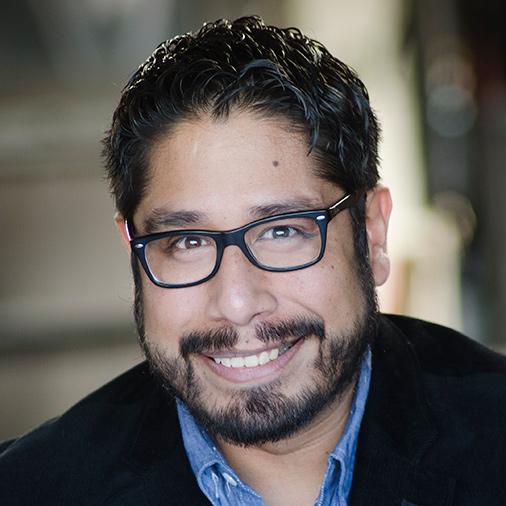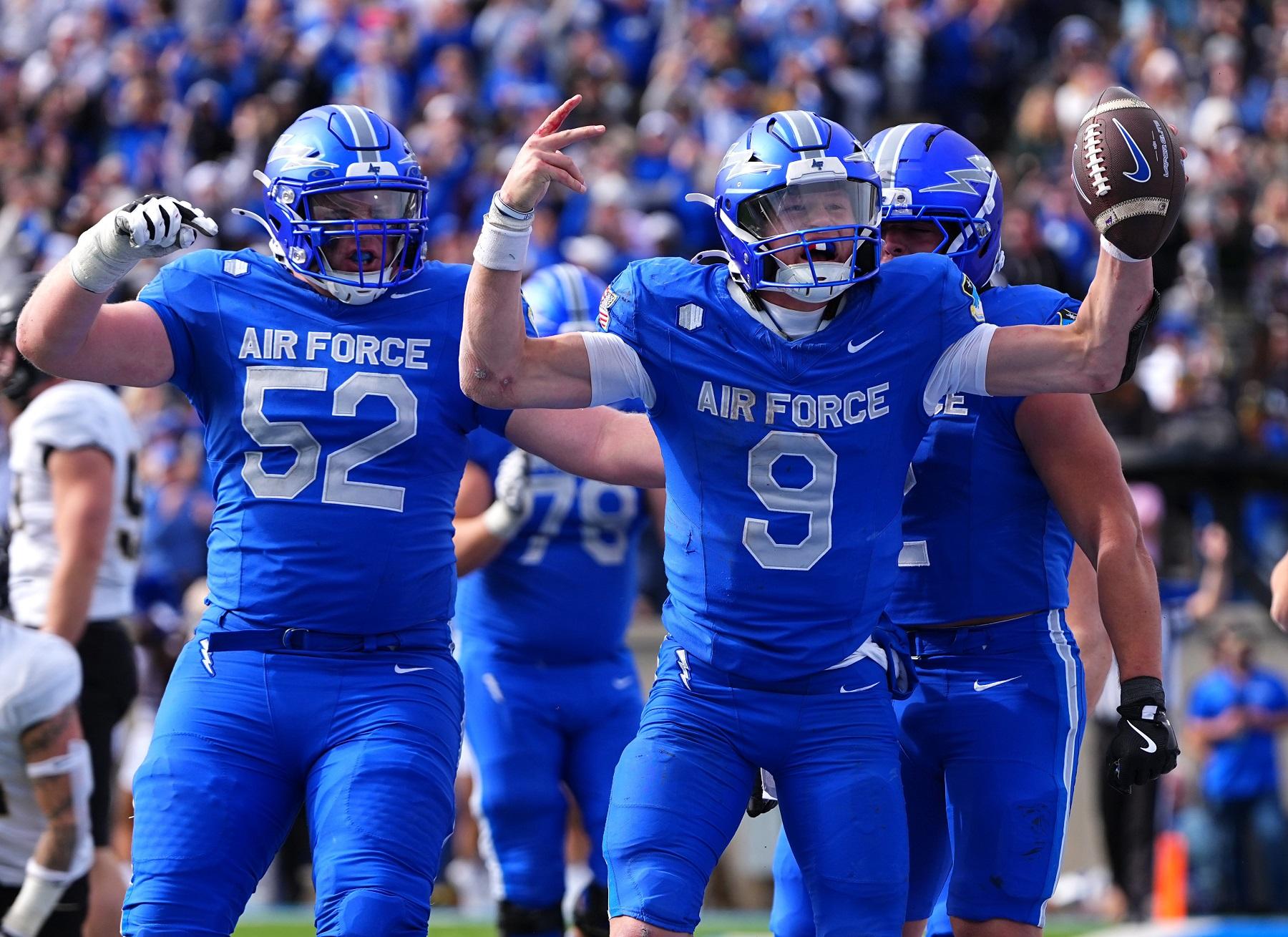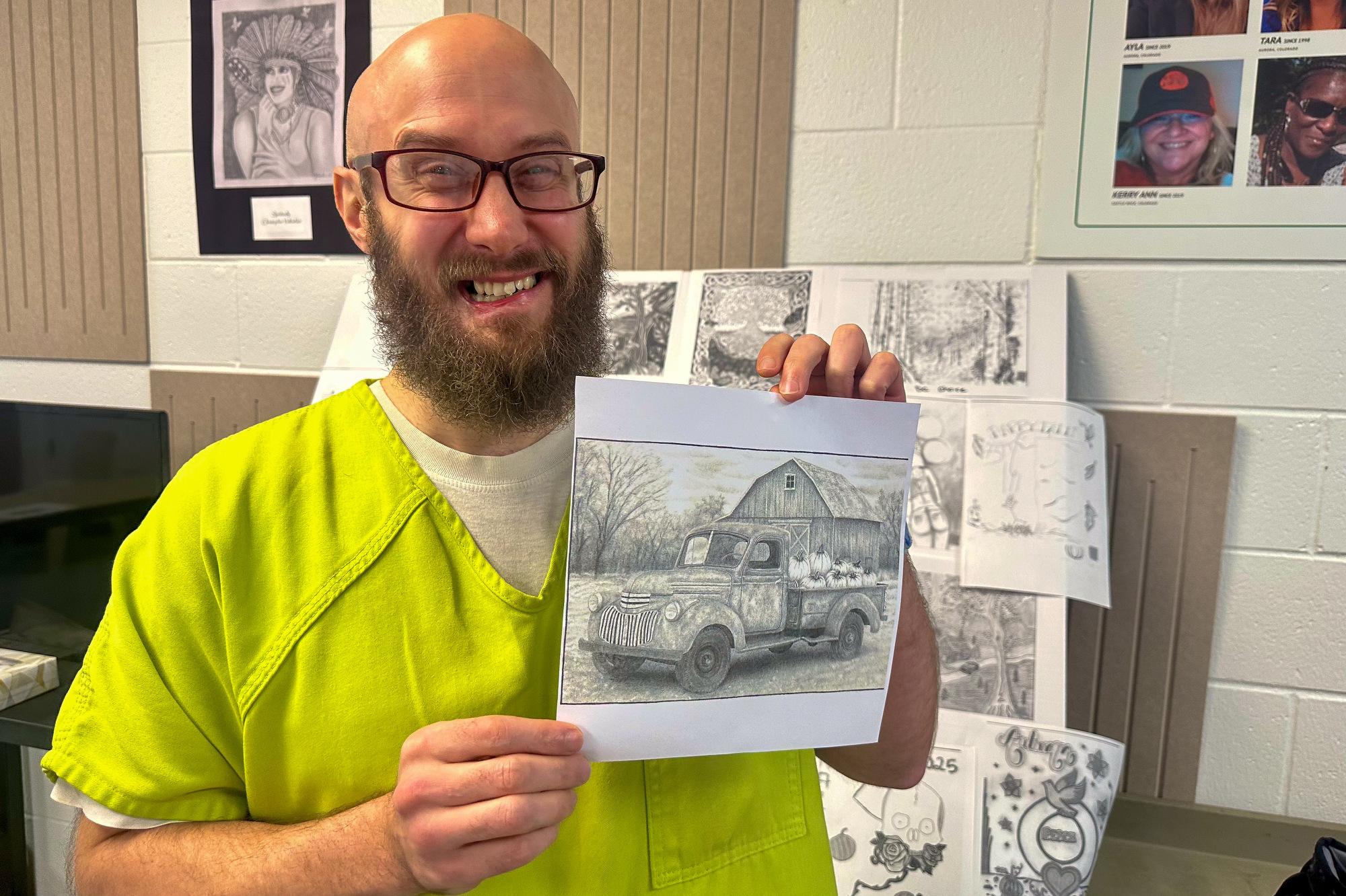
If you want to get around Denver in something other than a car, David Pulsipher was hired to have your back.
Pulsipher is the city's first full-time pedestrian planner. One of his first tasks? Create a new pedestrian vision for Denver. He says the Denver Moves: Pedestrian & Trails plan is the "keystone element for what we do as a city, it's our vision, the big picture," when it comes to walkability.
Pulsipher talked with CPR's Ryan Warner about his new role, and answered listener questions.
Interview Highlights
On making intersections safer:
“There are things that you can do both to the signals themselves, and also the infrastructure around the crosswalks/intersections that make them safer. You can increase the time that it takes a pedestrian to cross, so increasing the signal timing.
"You can also install what's called a 'lead pedestrian interval', which before the light turns green for the car; you give a green or the walk symbol to the pedestrian. It gets them out in the crosswalk before cars start to go, so it eliminates that right-turn conflict when, if a pedestrian and a car were about to go at the same time. So that's something you can do. You can also add enhanced visibility to the crosswalk markings themselves, making it more intuitive to a motorist as they approach an intersection that they expect to see someone there.”
On considering speed as a safety factor:
“A pedestrian hit going 40 miles per hour has a 90 percent chance of dying. If you slow that down to 20 miles per hour, the pedestrian has an 80 percent chance of living. So to me those numbers you quoted from CDOT tell me we have a speeding problem as well. We need to slow people down and we need to create a culture where we value people's lives, we value safety, and we value sensitive users of the road.”
On the listener question, “Why must pedestrians push buttons to a get a walk signal to cross?”
“That's something we definitely hope to address through the Denver Moves: Pedestrian Plan is to identify locations where it's not necessary. We're just going to give that signal, that signal phase to the pedestrian, no matter if a pedestrian is there or not.”
Ryan Warner: And what is the benefit of that? Because I can imagine the driver thinking why is this changing, there's no one here.
“Well the benefit is is that you, no matter, sometimes you miss the phase or sometimes you're not paying attention; a pedestrian could be there or have limited ability to get to the button in time. Sometimes even I don't have the ability when I'm just trying to wrangle my stroller with children, and so then I'm supposed to wait an entire another cycle? So it eliminates that and makes it just an easier, more intuitive experience for a pedestrian.”
On keeping up with areas in Denver that are rapidly changing, such as RiNo:
“We are looking at a methodology to analyze all the gaps in the network, and we're going to go and identify the ones that are the most needful and using various criteria-- crash history, pedestrian volumes, adjacent land uses-- so that we can target and make the most, the best decision for installing new crosswalks where people need them the most.”
Ryan Warner: How do you make sure that doesn't happen just in wealthy neighborhoods?
“Part of the prioritization model we're using also factors geographic equity as well. So we'll be dividing the city into quadrants and we'll be making sure that we install sidewalks throughout the city in an equitable manner.”
Full transcript:
Ryan Warner: David, welcome to the program. David Pulsipher: Thanks for having me. RW: On Monday there was a serious car accident involving a pedestrian on Federal Boulevard near Regis University in North Denver. A few weeks ago a reporter at the Denver Post was killed in a crosswalk at Speer and Downing. And we heard from a listener, Richard Shackell, who was hit and dragged by a car at an intersection in Capitol Hill last year. So I want to start with intersections themselves. Are there concrete ways, no pun intended, that they can be made safer? DP: Absolutely. So there are things that you can do both to the signals themselves and also the infrastructure around the crosswalks/intersections that make them safer. You can increase the time that it takes a pedestrian to cross so increasing the signal timing. You can also install what's called a 'lead pedestrian interval', which before the light turns green for the car, you give a green or the walk symbol to the pedestrian so it gets them out in the crosswalk before cars start to go so it eliminates that right-turn conflict when, if a pedestrian and a car were about to go at the same time. So that's something you can do. You can also add enhanced visibility to the crosswalk markings themselves, making it more intuitive to a motorist as they approach an intersection that they expect to see someone there. RW: As opposed to a kind of fading white strip of paint. DP: Exactly. Yeah, it's preferable to give a lot more visible indication to a motorist that you expect to see people there when you approach the intersection. You can also do what's called 'curb extensions' or bump-outs which puts a, it's like adding a big bulb on top of the curb and it allows the pedestrian to look out and stand out above where normally a parked car would be and then they can see and it makes them more visible, they're not hiding behind the curb and it also shortens that distance because when you put these like caps or big bulbs on the curbs themselves, it shortens the distance they have to cross. So again it makes them more visible, easier to see. RW: And as you look around Denver, has the city adopted these and has it adopted them widely enough? DP: I, they have adopted them. We have a long way to go and obviously with any infrastructure improvements, we have to balance that throughout the city and also we have to balance the available resources that we have. So it's something that is my job to make sure we implement more of and we put them in the most needful places in Denver. RW: All right. A long way to go, you say, and Denver is currently putting together a new pedestrian plan. You're seeking input on it. DP: Yeah, that's correct. So the Denver Moves: Pedestrian and Trails Plan is just kicking off. It's part of a four-plan Denveright process which includes simultaneous plans from Blueprint Denver, Game Plan and Denver Moves: Transit. So the Denver Moves: Pedestrian and Trails Plan will give us the framework in Denver for what we want Denver to look like in the upcoming future and big vision. What do we want for our pedestrian environment. RW: And you are seeking inputs. You're going to also answer questions from some listeners here today. But I want to go to those figures from the Colorado Department of Transportation that there were 1330 car crashes involving pedestrians last year. Here's the thing, 72 percent of them, the great majority, happened outside of an intersection. So it's one thing to transform intersections in the way that you've already discussed but what does it say to you that so many pedestrians who are injured or killed, are so outside of intersections? Does that tell you that pedestrians are making iffy decisions or that cities aren't accommodating pedestrians well and they are forced then to cross in awkward places? DP: Yeah, that's a great question. I think it's a little bit of both but I think it's more that we have fundamentally planned for cars as the primary mode of transportation within the city and when you accommodate them, and encourage that, you also make it easier for them to go fast and we know that there's a direct correlation with speed and fatalities. A pedestrian hit going 40 miles per hour has a 90 percent chance of dying. If you slow that down to 20 percent, or 20 miles per hour, the pedestrian has an 80 percent chance of living. So to me those numbers you quoted from CDOT tell me we have a speeding problem as well. We need to slow people down and we need to create a culture where we value people's lives, we value safety, and we value sensitive users of the road. RW: Okay. When you talked about making intersections safer for pedestrians, you said that one option was to give pedestrians more time to cross. DP: Correct. RW: Now put yourself in the driver's seat and you are frustrated at how long this dang light is. Finally the light changes and you gun it, right, because now you're late. DP: Absolutely. RW: That speaks to increasing speeds which then makes pedestrians less safe. Isn't there a fundamental tension here that you have to figure out? DP: I think so and I think, I'm really glad we're having this conversation because I think we do need to talk about our speeds and you know it's seeming like, it's almost like a private behavior, like well if I speed, no one else is going to know. And I think we do need to have this conversation about why am I speeding, why am I going above what is actually safe and recommended on the roads and there are actually consequences to speeding, not just getting there in the time that I think I should get there. But we're on a shared resource and you know everyone has a right to use the road and everyone has a right to be safe and to be comfortable. RW: You're asking drivers to ask themselves a question. Why am I speeding? What is it, do I have a sense of entitlement that I'm in a vehicle, is that what you're saying? DP: I think it's worth having the conversation. Given that Denver is experiencing incredible growth and it's promising this idea and this vision to people that Colorado is a healthy place to live, you can get where you want to go and when people get here they're realizing that maybe there's some implications to if I drive my car, it's taking me a little bit longer and if I ride my bike or walk, maybe the environment isn't exactly what I expected it to be. I think we need to have this conversation around what are we, what kind of Denver are we trying to create, what are we promising, what are we wanting Denver to actually be like? RW: I want to focus on Colfax for just a moment. There's a section of Colfax Avenue, with a span I believe of seven intersections that has zero marked crosswalks. Have you seen that stretch yet? DP: Do you know the specific stretch? RW: I think it's roughly in like the Bluebird Theatre District. DP: Okay, sure. I mean I know that they actually just did in that district some of the artistic crosswalk treatments. I think one of the neighborhood organizations did some things there. RW: To make them more visible in some regards? DP: Sure to make them more visible and also as a part of a community place-making to sort of brand the community, empower the community as well. So I know they've done some things there but I don't know specifically each individual intersection and what's been done there with respects to crosswalks. RW: All right. One major concern for a lot of our listeners was sidewalks. And why don't we listen to those questions after a quick break. We are speaking with Denver's new Pedestrian Planner, that's David Pulsipher. He's the first person, as I said, to have that job and we'll continue the discussion after a break on Colorado Matters from CPR News. You're back with Colorado Matters from CPR News. I'm Ryan Warner. And let's return to our conversation with Denver's first Pedestrian Planner, that's David Pulsipher. I think he rode his bike to the studio today, is that right? DP: I did. RW: Okay. We invited listeners to ask you questions. And David Rapp [ph] of Denver wonders, "Why must pedestrians push buttons to get a walk signal to cross, for example, Colfax Avenue? At Lafayette and Colfax, pedestrians wait up to 100 seconds to cross after pushing the button." He goes on, "Why don't traffic engineers plan for the ubiquitous pedestrian as they do the ubiquitous car?" And I suppose by way of contrast, you don't push a button to get a green signal at a light when you're in a car, but you have to make a request if you're a pedestrian. I suppose that says something about an intersection. DP: I think so. And that's something we definitely hope to address at, through the Denver Moves: Pedestrian Plan is to identify locations where it's not necessary. We're just going to give that signal, that signal phase to the pedestrian, no matter if a pedestrian is there or not. RW: And what is the benefit of that? Because I can imagine the driver thinking why is this changing, there's no one here. DP: Well the benefit is is that you, no matter, sometimes you miss the phase or sometimes you're not paying attention, a pedestrian could be there or have limited ability to get to the button in time. Sometimes even I don't have the ability when I'm just trying to wrangle my stroller with children and so then I'm supposed to wait an entire another cycle? So it eliminates that and makes it just an easier, more intuitive experience for a pedestrian. RW: All right, so you think we will see more of those sort of automatic pedestrian crossings in the city? DP: Absolutely. RW: Well that, you answered that very quickly. Let's go to Jessica McGee of Denver who emailed us. She was recently at a new coffee shop in RiNo, it's the River North neighborhood. "I just left a coffee shop and I was teetering between cracked pavement and dirt and dodging oncoming cars." For context, RiNo is an industrial area that's redeveloping, never really intended for pedestrians in the beginning. Will that change, will these places in Denver whose complexion is changing, get the sidewalks to keep up? DP: Absolutely. So that's something that we are looking at right now with the Denver Moves: Pedestrian and Trails Plan. We are looking at a methodology to analyze all the gaps in the network and we're going to go and identify the ones that are the most needful and using various criteria, crash history, pedestrian volumes, adjacent land uses, so that we can target and make the most, the best decision for installing new crosswalks where people need them the most. RW: How do you make sure that doesn't happen just in wealthy neighborhoods? DP: Yeah so part of the prioritization model we're using also factors geographic equity as well. So we'll be dividing the city into quadrants and we'll be making sure that we install sidewalks throughout the city in an equitable manner. RW: That's what Angel Lindeen-Bond [ph] of Westminster was concerned about, that low-income and minority neighborhoods be represented in these plans and you say that will happen simply because there will be some kind of equal distribution I guess? DP: Yeah, a geographic equal distribution and that's really important to consider as well because for many people they can choose to walk or choose to bike or choose to take transit but we shouldn't forget the people that are pedestrians not by choice but they are compelled to, they have no other option. So we need to accommodate them just as we accommodate people with cars. RW: Right. Those who are walking not because it's a luxury but a necessity. Streetsblog Denver publishes news and commentary about safe streets, effective transit, walkable development. They noted that Denver's 2017 proposed budget from the mayor has reserved $2.5 million for sidewalk repair and construction that's next to city property, so libraries and parks because homeowners are responsible in large part for sidewalks that are in front of their own residences. But Streetsblog adds that's a really small amount compared to the $475 million needed for a complete system of city sidewalks. It's one thing to say you're committed to sidewalks, it's another thing to put the bucks there. Is this city committing enough money to improving conditions for pedestrians? DP: Well I will say that it's a good start. We obviously need more and Streestblog is correct, there is a lot of work to be done but I've worked for cities and worked in places where there was no budget and it was a nebulous concept. RW: No budget for sidewalks? DP: There was no budget for pedestrian or bicycle infrastructure. It was just sort of a nebulous, well, we'll shift things around if we can get to it. And so I will say that a dedicated budget that is just for sidewalks is a good start and it's better than I've seen in other places. RW: Even if it's just $2.5 million out of what are several hundred million dollars of need potentially. DP: Yeah, I would say, having money that's just ours to work with is certainly better than not having any and to beg for scraps and try to use unused funds from other, that's been dedicated elsewhere. RW: To that question of sidewalks in front of people's homes, that they are primarily responsible for that, correct? DP: That's true. RW: Is that true in every city? DP: No, other cities take some responsibility for maintenance or snow plowing, other things like that. RW: And to what extent do you think that model, in which private citizens play a role, affects the quality of sidewalks and affects the pedestrian experience. Because it occurs to me in some ways that the city can only do so much then. DP: Sure. You know that's a really interesting question. I think in some neighborhoods there's definitely an element of pride but also a financial means, where they have the ability to take care of the sidewalk. And then you find in other areas where it's of a significant financial burden for them to maintain and take care of their sidewalks. So I think with economics you see a disparity in quality. RW: And so can a Pedestrian Plan only go so far in terms of the city's influence? DP: I think the Pedestrian Plan will give us the framework to establish long-term success. I, the conversation on private versus public funding and maintenance is an ongoing conversation and I know that the city council is looking at that. So we will obviously work with them and try to move the conversation forward. RW: One critical question is whether to make the 16th Street Mall, which runs through Downtown Denver, wholly pedestrian. That's at least a consideration and to move the buses that travel down it to adjacent streets. Do you have a position on that? DP: You know I haven't really looked, I haven't looked at it from a critical lens yet. I will say that pedestrian streets like maybe Pearl Street in Denver, or in Boulder. RW: In Boulder. DP: In Boulder to a certain extent are really great places. And when you think of all of the great places in the world, great cities like Paris or Barcelona, you think of pedestrians moving freely and interacting and having that ability to, that freedom. And I think that could be something that Denver could be a landmark pedestrian institution that starts the conversation of we value pedestrians, we value safety and we value a livable, sustainable future. RW: So you think that has a lot of promise? DP: I think so, yeah, the promise of a pedestrian plazas are really exciting and should definitely be explored. RW: Okay. Why don't we wrap up with this. If you improve the pedestrian experience, do you necessarily improve the biking experience as well or do you see the roads as really divided into kind of three users: automobiles, cyclists, pedestrians? DP: Well I think there's certainly some overlap between the amenities that pedestrians and bicyclists want in a road and distributing road space for them. When you take a road space from cars, you can give it to bicyclists and pedestrians and that can have a positive benefits for both. I think that bicyclists in general will have an improved environment when we improve pedestrian infrastructure. RW: And yet, I've had that experience of being a pedestrian feeling run down by a bike as well. DP: Absolutely. So I think that's why you also have to accommodate bicyclists as well so they feel safe and comfortable so there is that division and people don't feel like they have anyone breathing down their neck. RW: Thanks for speaking us. Nice to meet you. DP: Thanks so much for having me. |









